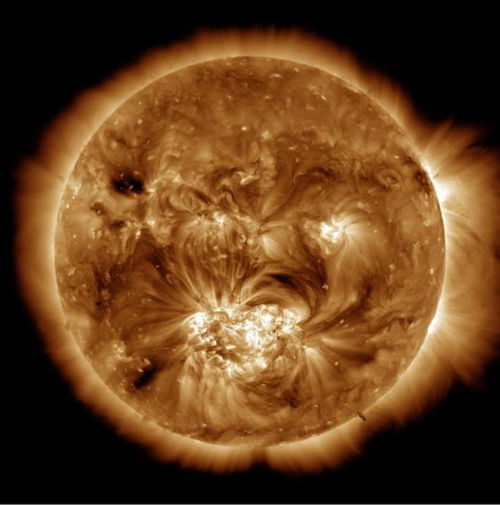Specimen of the month: Solar plasma

The sun is a powerful life-sustaining force for the planet Earth. The August 21 solar eclipse allowed researchers and photographers to record and study the unique chemistry and physics of this star as the moon covered the sun, obscuring its blinding glare.
Visible to human eyes only during a solar eclipse, the gases of the corona surrounding the sun are highly charged ionized hydrogen and helium called plasma, formed by nuclear fusion reactions in the sun. The solar eclipse photos taken by Mike Lynch of KGS show solar mass ejections as red fountains of material streaming from the sun’s surface. These solar flares are electromagnetic and chemical plasmas, a mixture of both negative and positive ions that creates coronal mass ejections around the sun’s atmosphere.
These ejections can cause solar winds and magnetic storms that are felt on Earth and can influence or interrupt electronic communications. Some scientists think that the solar winds would have removed Earth’s atmosphere were it not for our planet’s magnetic field. Some of these solar winds or storms are revealed when charged ionic gases intersect with Earth’s atmosphere, causing the Northern and Southern Lights.
Solar winds can also force the tails of comets to point away from the sun when the comets move into the inner solar system, near the sun. The study of corona gases and plasma in solar storms is relatively new, first beginning in the late 1800s and early 1900s. Today the science of elemental chemistry and physics of the sun has been applied to create plasma televisions, medical research such as magnetic resonance imaging, and military innovations.
View all archived specimen of the month from KGS collection
